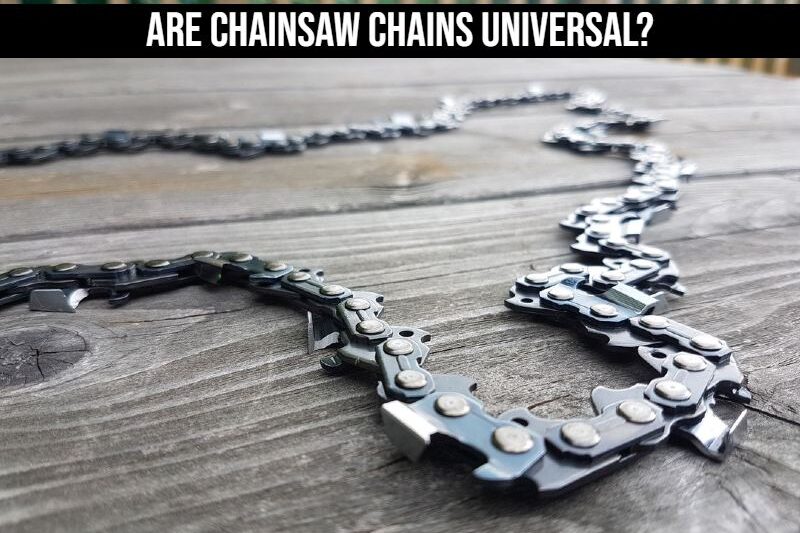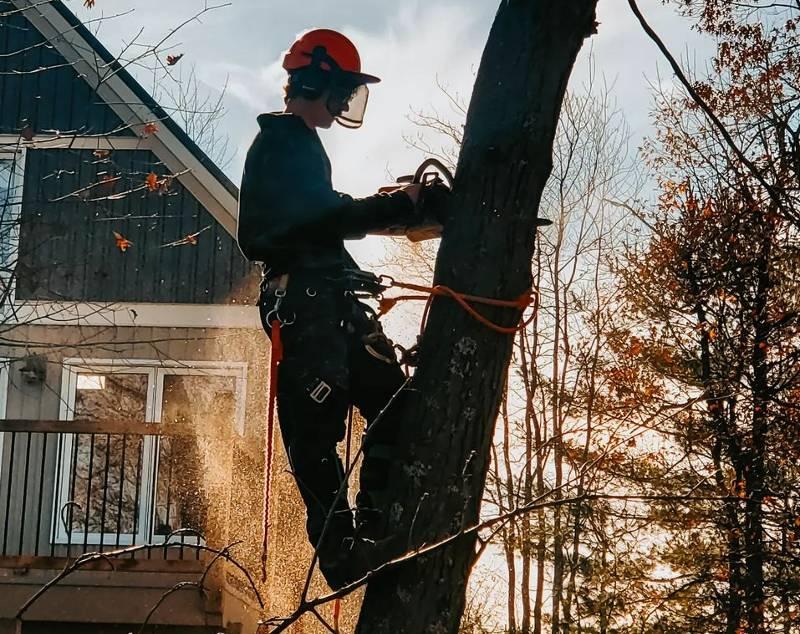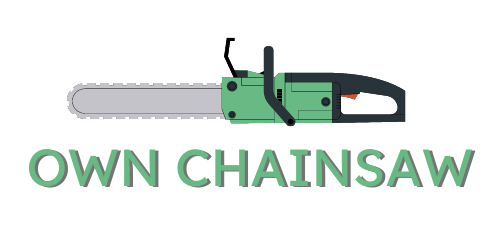Have you ever been frustrated by the constant search for the correct chainsaw chain?
Do you dread the thought of going to the hardware store, searching through a sea of options, only to find that the chain you need is out of stock?
We understand your frustration and we’re here to answer the question on everyone’s mind: are chainsaw chains universal?
No, they are not. There are a plethora of different chainsaw chains available on the market, each designed for specific tasks and types of saws. Chainsaw chains come in a variety of sizes and styles to fit specific machines and cutting needs.

When purchasing a chain for your chainsaw, you should know the exact dimensions and specifications.
Not only can the wrong chain damage your machine, but it can also pose a safety risk to the operator as well.
How To Find What Size Chain Is On My Chainsaw?
When it comes to finding the size of the chain on your chainsaw, there are several ways to determine the correct size.
Here are some ways to find what size chain is on your chainsaw:
1. Examine your user guide
Check your chainsaw’s user guide or manual. It should contain information about the chain size and type that your chainsaw uses.
If you don’t have the manual, you can usually find it online by searching for the make and model of your chainsaw.
2. Verify the bar and the case for stickers
Look for stickers on the bar and the chainsaw’s case that may indicate the chain size. Chain sizes and types are shown on stickers included by some manufacturers.
3. Look for engraving on the bar’s side
If there are no stickers on your chainsaw, you may be able to find the chain size by looking for engraving on the side of the bar.
To see the engraving, you may need to remove the bar from the chainsaw. The engraving should indicate the chain pitch, gauge, and drive link count.
4. Online search
You can always search online for information if you can’t find it in the user guide or by examining the chainsaw.
Check the chain size for your particular model. Many websites provide information on different chainsaw models and the chains they use.
5. Offer little kickbacks
Chainsaw chains are available in different sizes, pitches, and gauges. If you’re not sure what size chain you need, consider offering a little kickback to a professional.
Taking your chainsaw to a local repair shop or dealer can help you determine the correct chain size and type for your chainsaw.
Do chainsaw chains also differ for electric, gas, or battery-powered?

With the advancement of technology, we now have electric, gas, and battery-powered chainsaws that make our work easier, faster, and more efficient. However, one question that often arises is whether chainsaw chains differ for these types of chainsaws.
The short answer is yes; chainsaw chains do differ depending on the type of chainsaw you are using. Let’s take a closer look at why this is the case.
Electric chainsaws are powered by electricity, which means they have a lower power output compared to gas-powered chainsaws.
As a result, electric chainsaw chains are typically thinner and have fewer teeth. They are also less aggressive, which makes them less likely to kick back or cause damage to the chainsaw or user.
As a result of their higher power output, gas-powered chainsaws require more robust and aggressive chainsaw chains. Because they have more teeth and are thicker, these chains can cut through thicker and denser wood.
The power output of battery-powered chainsaws is lower than that of gas-powered chainsaws.
With advancements in battery technology, battery-powered chainsaws now have more power than ever before. Due to this, battery-powered chainsaw chains resemble electric chainsaw chains.
Does every chainsaw chain have the same length?
The answer is no, they are not all the same, even with the same bar length. Different models can have different link counts, which can affect the performance and cutting ability of the chainsaw.
Link count is a term used to describe the number of individual links in a chainsaw chain. These links are the small, metal pieces that make up the chain, and they are connected by rivets.
The number of links varies depending on the chain model, and it has a direct impact on the performance of the chainsaw.
For example, a 16-inch chainsaw might come with a 56-link chain, while another 16-inch model might have a 62-link chain. This can affect the performance of the chainsaw, as well as the type of cutting that it’s best suited for.
A chainsaw chain with a higher link count will typically have smaller links, which can result in a smoother and more efficient cut.
However, a higher link count can also result in a weaker chain, which may not be suitable for heavy-duty cutting tasks.
Are replacement chainsaws universal?
The short answer is no. However, many replacement chains are designed to fit a variety of models, so it’s not uncommon for them to work with multiple chainsaws.
If you’re looking for a replacement chain, you can turn to both chainsaw-specific manufacturers and businesses that specialize in replacement parts.
These companies often offer a range of options to choose from, so you can find the right chain for your specific model.
It’s important to note that not all chainsaws are created equal, and some require specialized chains that may not be as readily available.
When shopping for a replacement chain, be sure to consider the pitch, gauge, and number of drive links required for your chainsaw.
Specs can vary from model to model, so do your research before you buy a chainsaw chain.
Can I replace my chainsaw chain with a longer or shorter one?
No, it is not recommended to switch to a longer or shorter chainsaw chain. The chainsaw chain is designed to match the length of the bar and sprocket of your chainsaw, and using a chain that is too short or too long could result in safety issues or damage to your chainsaw.

I am Senior Editor and CEO and I have been a chainsaw enthusiast for over 12 years. As a passionate chainsaw enthusiast, I have got a wealth of knowledge and experience with chainsaws, and I am constantly striving to expand my expertise and knowledge. Read More!
